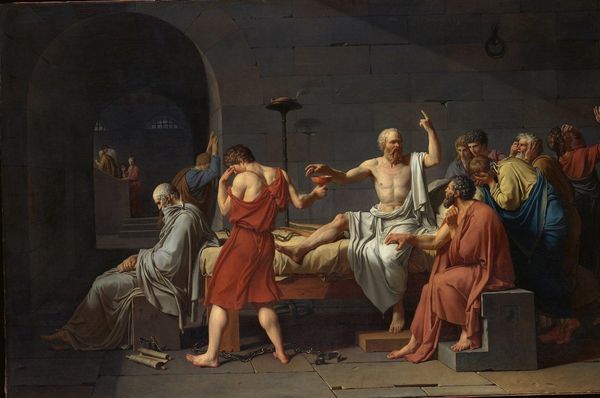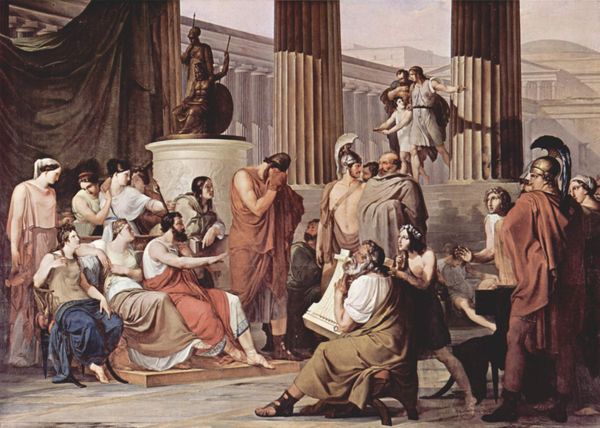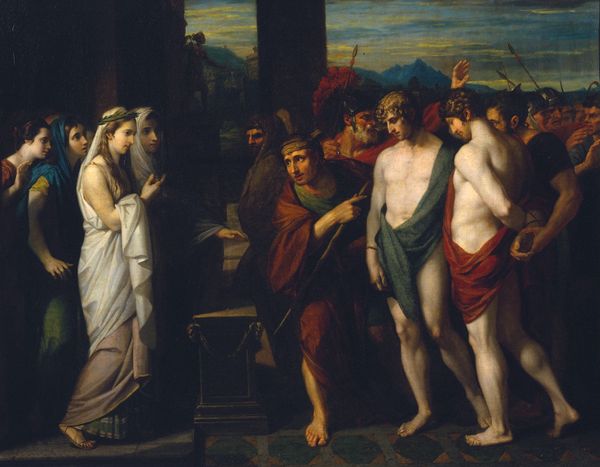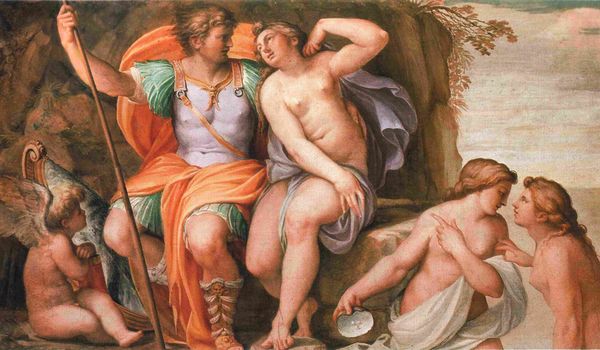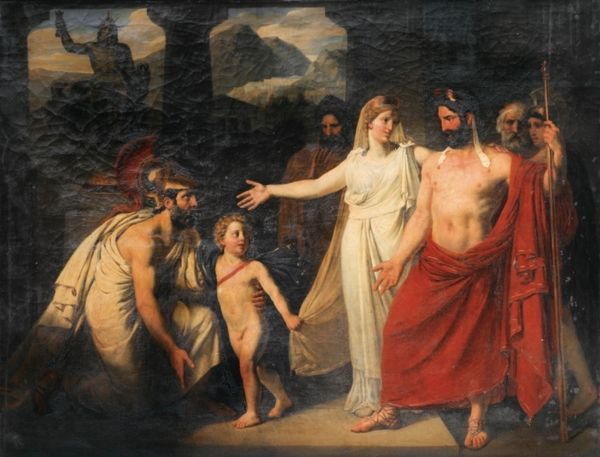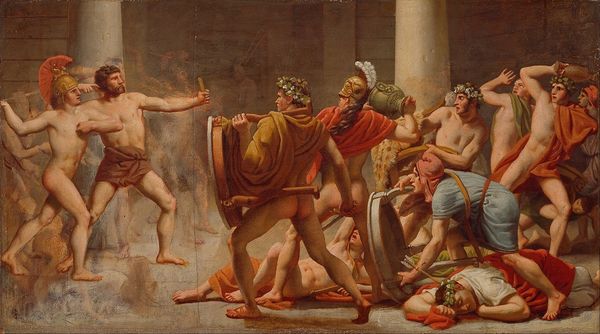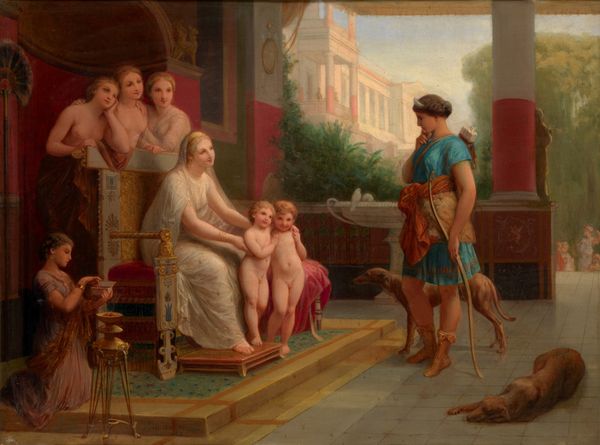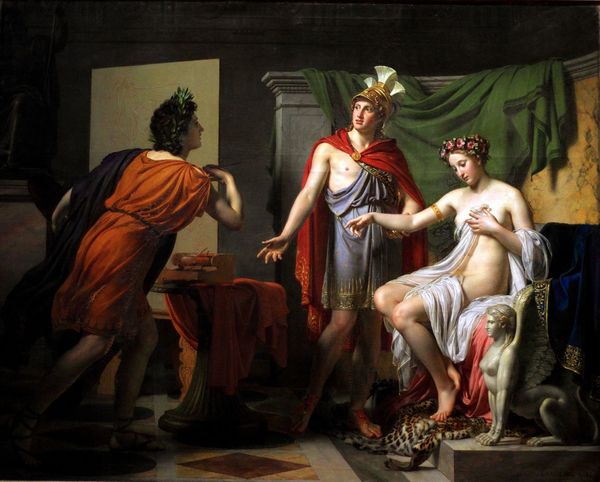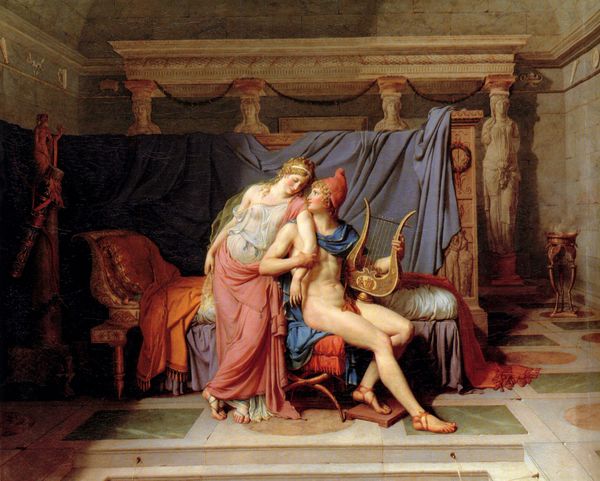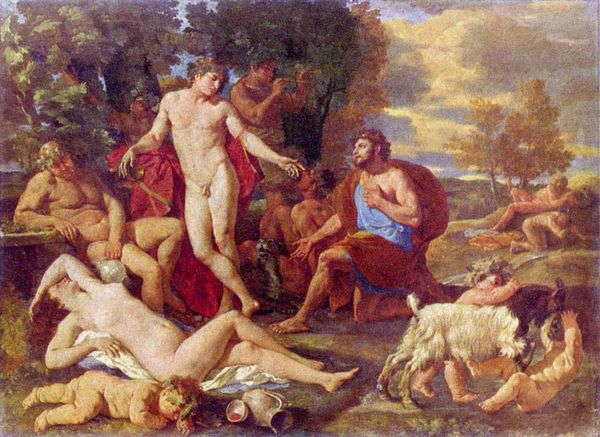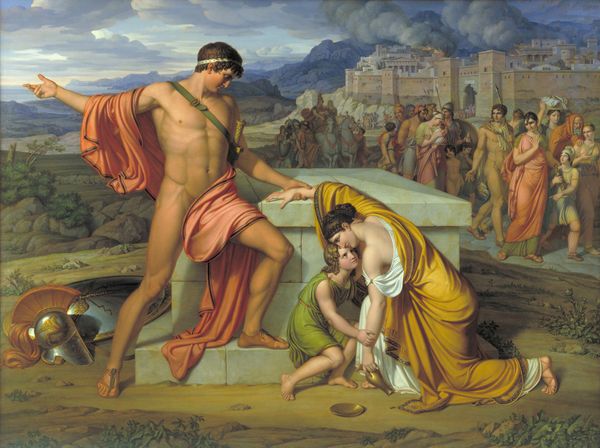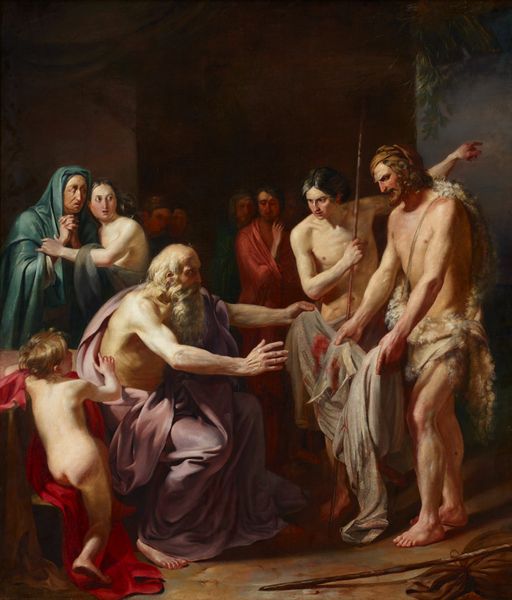
Copyright: Public domain
Curator: Standing before us is Albrecht Anker’s “The Knuckle Players,” created in 1864 using oil paint. My initial impression is one of studied classicism, balanced with everyday realism: it is staged and academic, yet feels curiously immediate. Editor: It evokes a complex historical layering. What stories about the labor of producing such images, its materials, and how those narratives shape what we consider art? Curator: The painting's construction indeed raises interesting questions. Anker positions a casual genre scene within a formal neoclassical composition. We see boys engrossed in a game of knucklebones or "astragali" using bones thought to be of sheep or goat, set against a backdrop of classical architecture, with what seems to be a philosopher looking on. Editor: Right. It presents us with an image of leisure that may erase the complex socioeconomic conditions necessary to support this form of education, which in the Roman period was limited only to males of noble and senatorial rank. It also prompts critical engagement with narratives of exclusion based on age, gender and social hierarchy that structure Western history. Curator: The attention to the folds of the fabric, the modeling of skin, especially against the marble backdrop… it's undeniably beautiful, executed with incredible precision and care, clearly in line with academic traditions. But, what does it tell us about artistic value and how value is assigned? Is realism automatically ‘lower’ than history painting? Editor: Or who decides what we should even value in images of everyday life? Who gets remembered by such depictions? These youths have privilege, we can safely assume. This painting invites us to reflect on these disparities as its classical framing hints at. Curator: Perhaps this layering of references points towards Anker trying to grapple with contemporary Swiss identity through these classical lenses, hinting to Swiss neutrality while echoing European tradition. He’s navigating national pride alongside an artistic legacy. Editor: True, these historical allusions offer potent tools for commenting on then contemporary social dynamics within Switzerland and throughout the rest of Europe. Curator: It becomes more than just a pleasant genre scene then. Editor: Exactly. Examining Anker’s choice of subject through a contemporary lens allows us to highlight those systems of power that are at play—both in front of and behind the canvas.
Comments
No comments
Be the first to comment and join the conversation on the ultimate creative platform.
